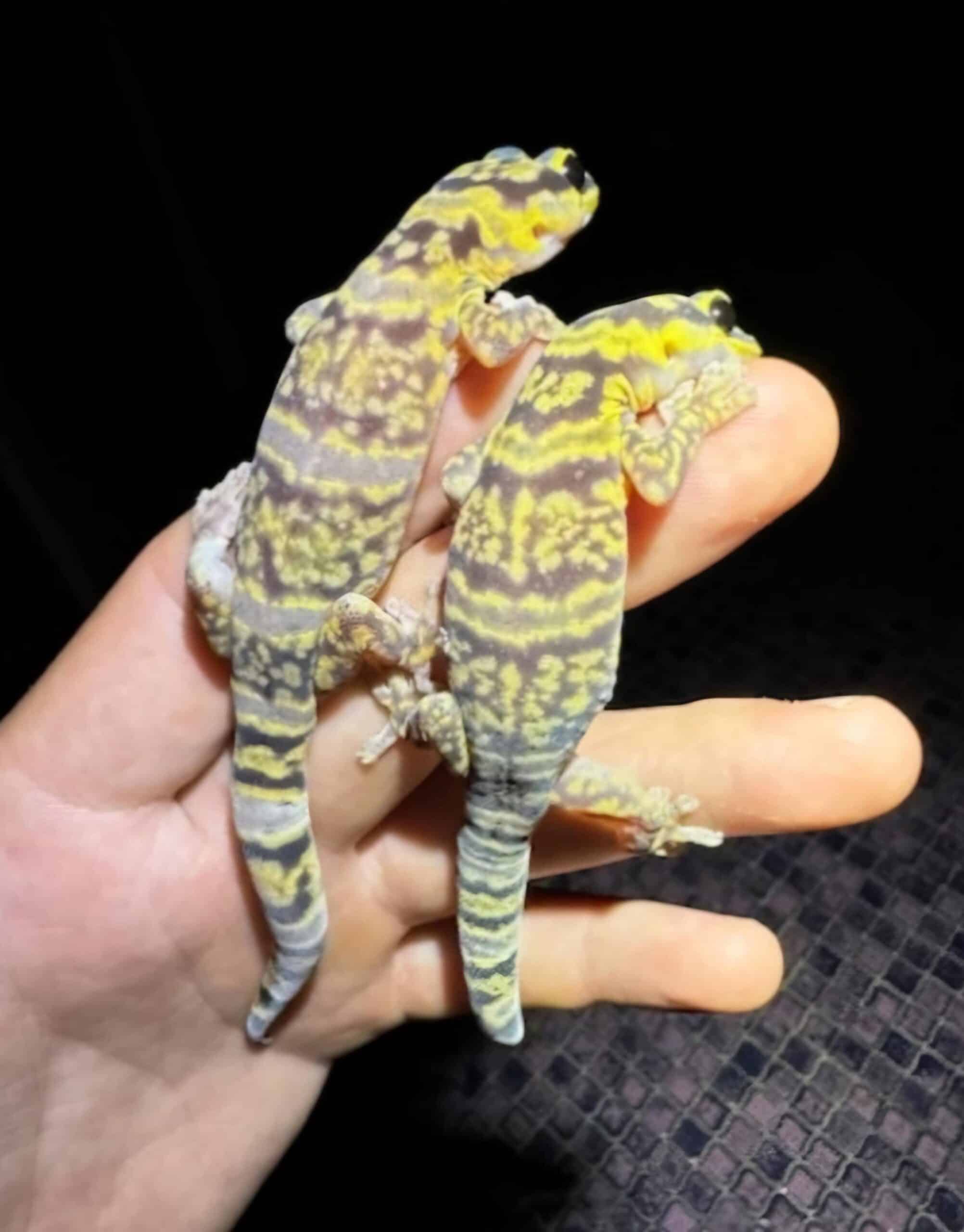Marbled velvet geckos are becoming an increasingly popular reptile choice among Australian hobbyists—and for good reason. With their striking marbled patterns, soft-textured skin, and calm nature, these nocturnal lizards are ideal for both beginner and experienced reptile keepers.
In this blog, we’ll explore everything you need to know about marbled velvet geckos—from where they live in the wild and their conservation status, to how to set up the perfect tank to mirror their natural environment. If you’re considering bringing one of these gentle creatures home, or just want to learn more, read on.
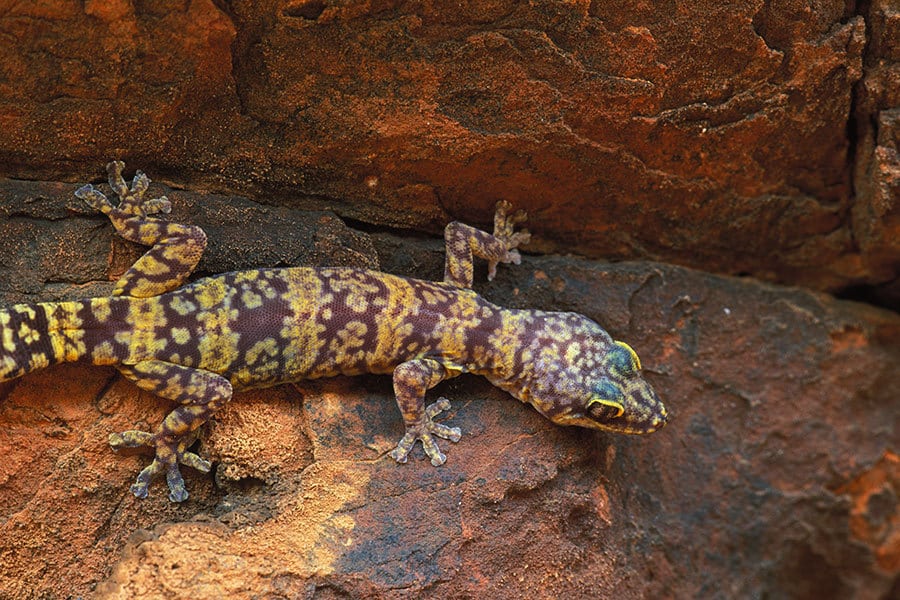
Where Do Marbled Velvet Geckos Live in the Wild?
In the wild, marbled velvet geckos (also known as Oedura marmorata) are native to parts of northern and central Australia. They are often found in rocky outcrops, tree hollows, and crevices, particularly in arid and semi-arid regions like the Northern Territory and parts of Queensland.
These geckos are nocturnal and arboreal, which means they’re mostly active at night and prefer to climb or live in elevated places. Their natural environment includes plenty of hiding spots, rough surfaces for climbing, and dry conditions. When setting up a tank for marbled velvet geckos, replicating this terrain is essential to keep them healthy and stress-free.
Conservation Status
At present, marbled velvet geckos are not listed as endangered or threatened. They are relatively common in the wild, and their population appears stable. However, like all native Australian reptiles, they are protected by law. This means you must hold a valid reptile licence to keep one as a pet in most Australian states or territories.
Always check your local wildlife authority’s regulations before purchasing or adopting marbled velvet geckos.
Common Health Issues in Marbled Velvet Geckos
Like all reptiles, marbled velvet geckos can develop health issues if their environment or diet isn’t properly managed. Thankfully, many problems are preventable with the right care. Here are a few to watch for:
Shedding problems: If humidity is too low or the enclosure lacks rough surfaces, your gecko may struggle to shed. Provide a moist hide and rough textures to help them slough off skin.
Metabolic Bone Disease (MBD): Caused by calcium or vitamin D3 deficiency, MBD leads to weak bones, tremors, or deformities. Prevent it by dusting feeder insects with calcium and providing appropriate UVB lighting.
Impaction: Eating substrate or oversized insects can block the digestive tract. Use safe substrates and feed appropriately sized prey.
If your gecko shows signs of lethargy, reduced appetite, or weight loss, consult a reptile-experienced vet as soon as possible.
Choosing the Right Gecko for Your Family
Marbled velvet geckos are ideal for families, beginners, and even school or therapy environments due to their calm nature and moderate care needs. When selecting a gecko:
Choose a healthy, alert animal with clear eyes, a plump tail, and clean skin.
Ask about their feeding history and age—young geckos are more active but need more frequent feeding.
Make sure the seller is a licensed breeder or pet store like Toni’s Pet Station.
Whether you’re a first-time reptile keeper or adding to your collection, marbled velvet geckos offer a rewarding and manageable experience.
Unique Appearance and Behaviour
As their name suggests, marbled velvet geckos have a distinctive marbled pattern that ranges from soft greys and creams to rich browns and blacks. Their skin has a velvety texture, which sets them apart from many other geckos with shiny or scaled finishes.
Behaviour-wise, they are calm and curious. Unlike some high-energy lizards, marbled velvet geckos are generally relaxed and slow-moving. They will often explore their enclosure at night, climbing on rocks, branches, or enclosure walls. During the day, they prefer to hide and rest in cool, shaded areas.
Setting Up the Ideal Habitat
To keep your marbled velvet gecko healthy and thriving, it’s important to replicate their natural habitat as closely as possible. Here’s what to consider:
Enclosure Size
A single adult gecko needs at least a 45cm x 45cm x 60cm enclosure (or larger). Vertical space is just as important as floor space, due to their arboreal habits.
Substrate
Use a dry, easy-to-clean substrate like reptile carpet, paper towel, or a mix of sand and soil. Avoid overly damp materials, as marbled velvet geckos are sensitive to high humidity.
Climbing Features
Mimic their wild environment by including:
Tree branches
Cork bark
Rocks
Artificial ledges or vines
Providing hiding spots at different heights gives your gecko choices for resting and regulating temperature.
Lighting & Heating
While marbled velvet geckos are nocturnal, they still benefit from a clear day-night cycle. A 12-hour light cycle using a UVB globe (2-5%) is ideal.
Maintain a temperature gradient of:
Warm side: 28–32°C
Cool side: 22–25°C Night temps can drop slightly but should not fall below 18°C.
A ceramic heat emitter or heat mat regulated with a thermostat can help maintain consistent temperatures.
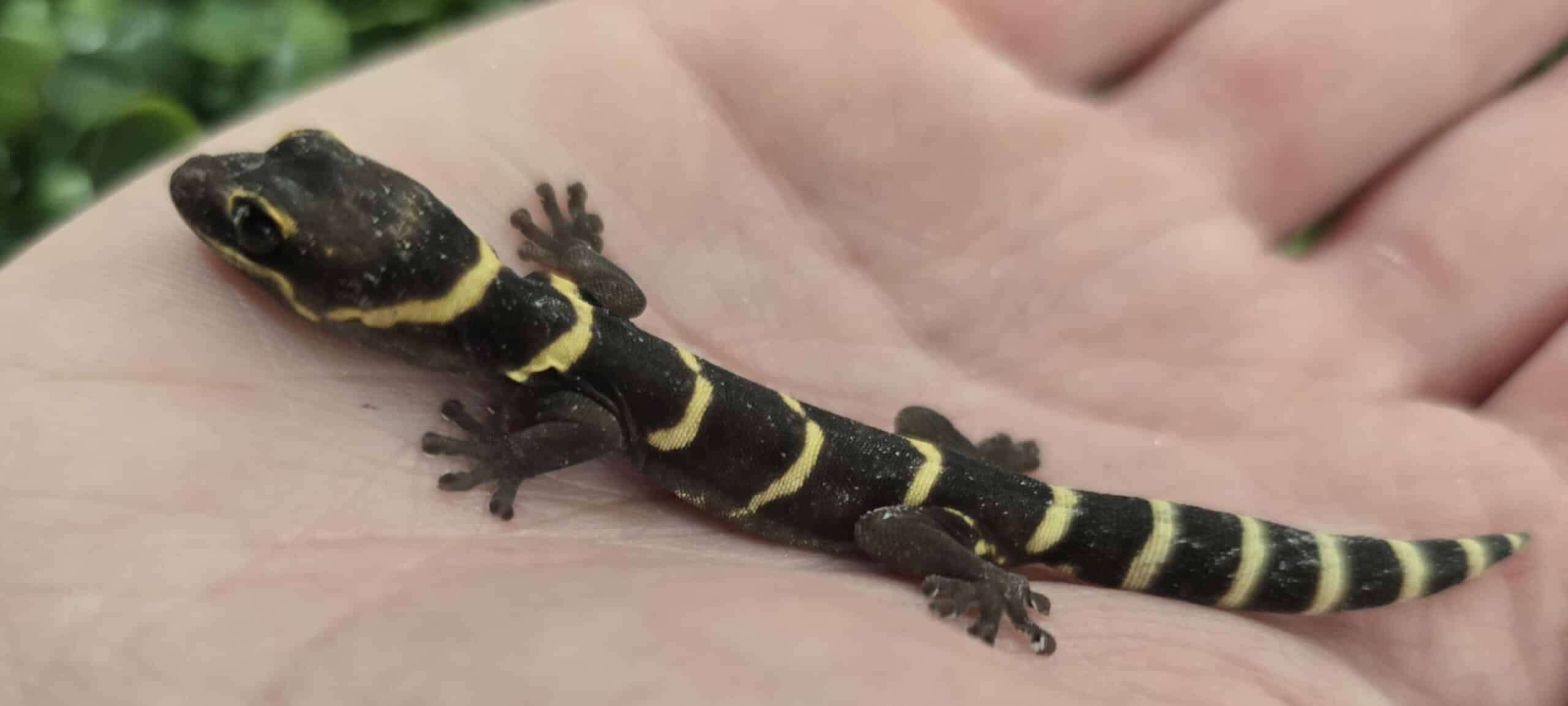
What Do Marbled Velvet Geckos Eat?
In the wild, marbled velvet geckos are insectivores, feeding on a range of live bugs including moths, crickets, beetles, and spiders. In captivity, a well-rounded diet includes:
Gut-loaded crickets
Wood roaches
Mealworms (occasionally)
Silkworms or small hornworms
Feed juveniles daily and adults every 2–3 days. Always dust insects with calcium and multivitamin supplements to prevent nutritional deficiencies.
Provide clean, fresh water in a shallow dish and mist the enclosure lightly every few days to support hydration.
Handling and Temperament
Marbled velvet geckos are generally docile and can be handled with care. Let your gecko get used to its enclosure and routine before attempting regular handling. When you do begin, keep sessions short, gentle, and close to the ground.
Always support their body fully and avoid touching their tail, as like many geckos, they may drop it when stressed (though it will regrow). It is recommended to keep handling to a minimum due to their tail and sometimes skittish nature. If you’re looking for a reptile that can be handled regularly consider a bearded dragon.
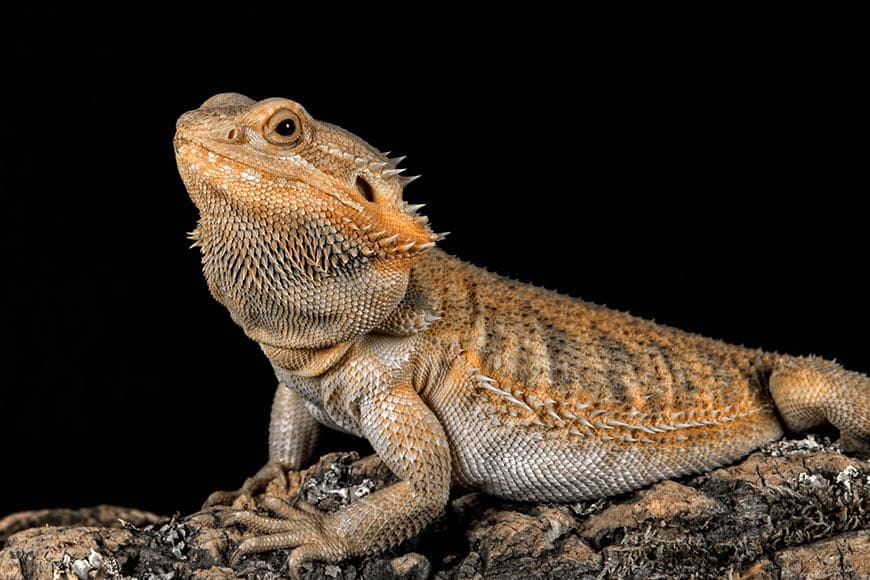
Mimicking Their Natural Environment
To ensure your marbled velvet gecko stays healthy and stress-free, think about how to bring the wild indoors. Key tips include:
Use natural-looking hides and decor like bark and rock caves
Maintain a dry environment with just occasional misting
Offer insects that resemble wild prey
Keep noise and light disturbance to a minimum at night
These steps not only help your gecko feel at home but also encourage natural behaviours like climbing, exploring, and hunting.
Do I Need a Licence to Keep One?
Yes. Marbled velvet geckos are protected native reptiles in Australia, and you’ll need a current reptile keeper’s licence in most states and territories. These can usually be obtained online through your local Department of Environment or Parks and Wildlife.
This requirement helps ensure ethical breeding, proper care, and protection of native species. Always buy your gecko from a licensed breeder or pet store like Toni’s Pet Station.
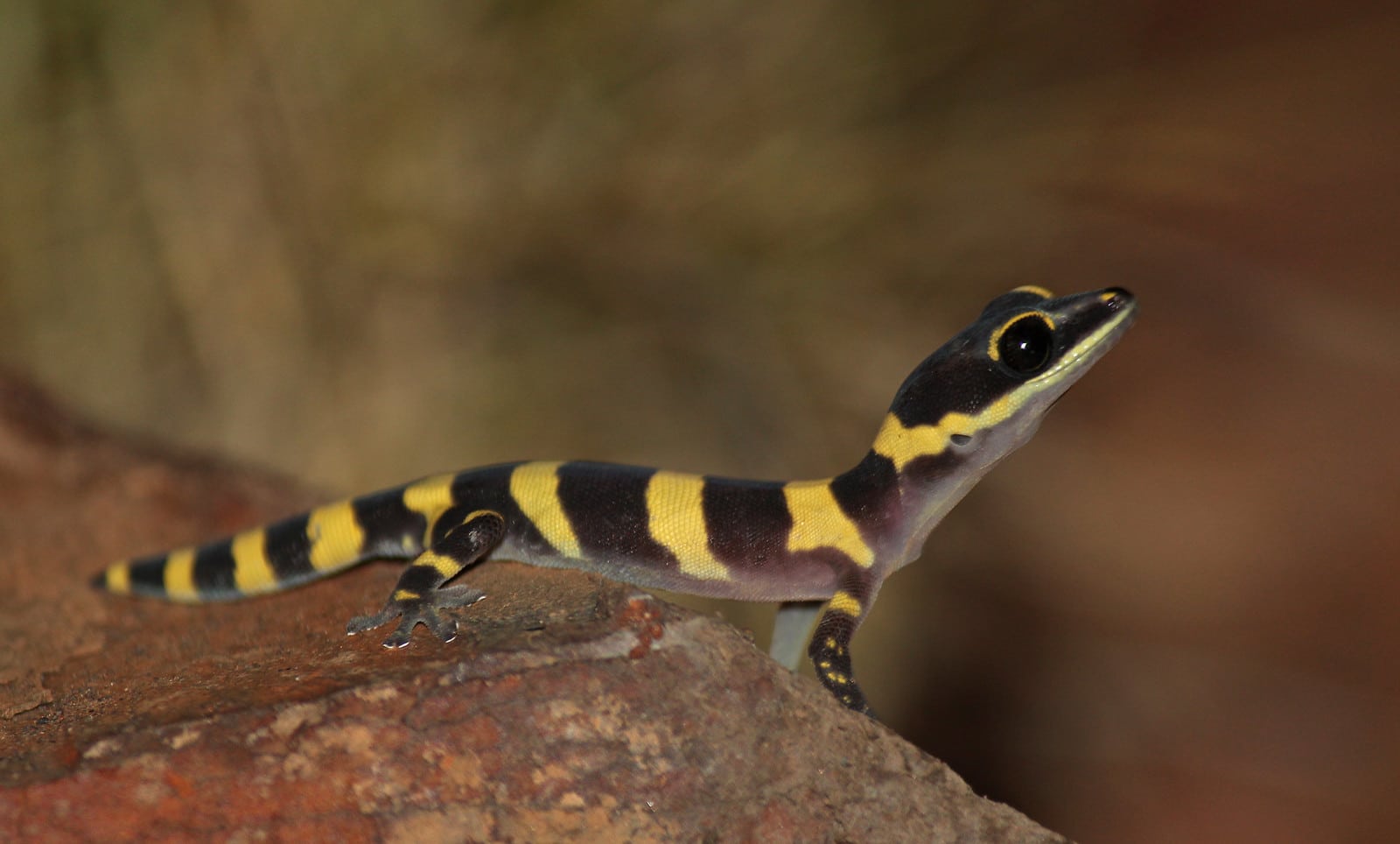
Final Thoughts
Marbled velvet geckos are a beautiful, low-maintenance, and rewarding reptile to keep. By understanding where they come from and how they live in the wild, you can provide the best possible care in captivity. From carefully set-up enclosures to a healthy insect diet, everything you do to mimic their natural environment helps your gecko thrive.
Just don’t forget—keeping marbled velvet geckos requires a valid reptile licence in most parts of Australia. If you’re ready to add one to your collection, Toni’s Pet Station can help with advice, supplies, and licensed availability.
Visit Toni’s Pet Station in-store or contact us to check availability of marbled velvet geckos and other native reptiles.

